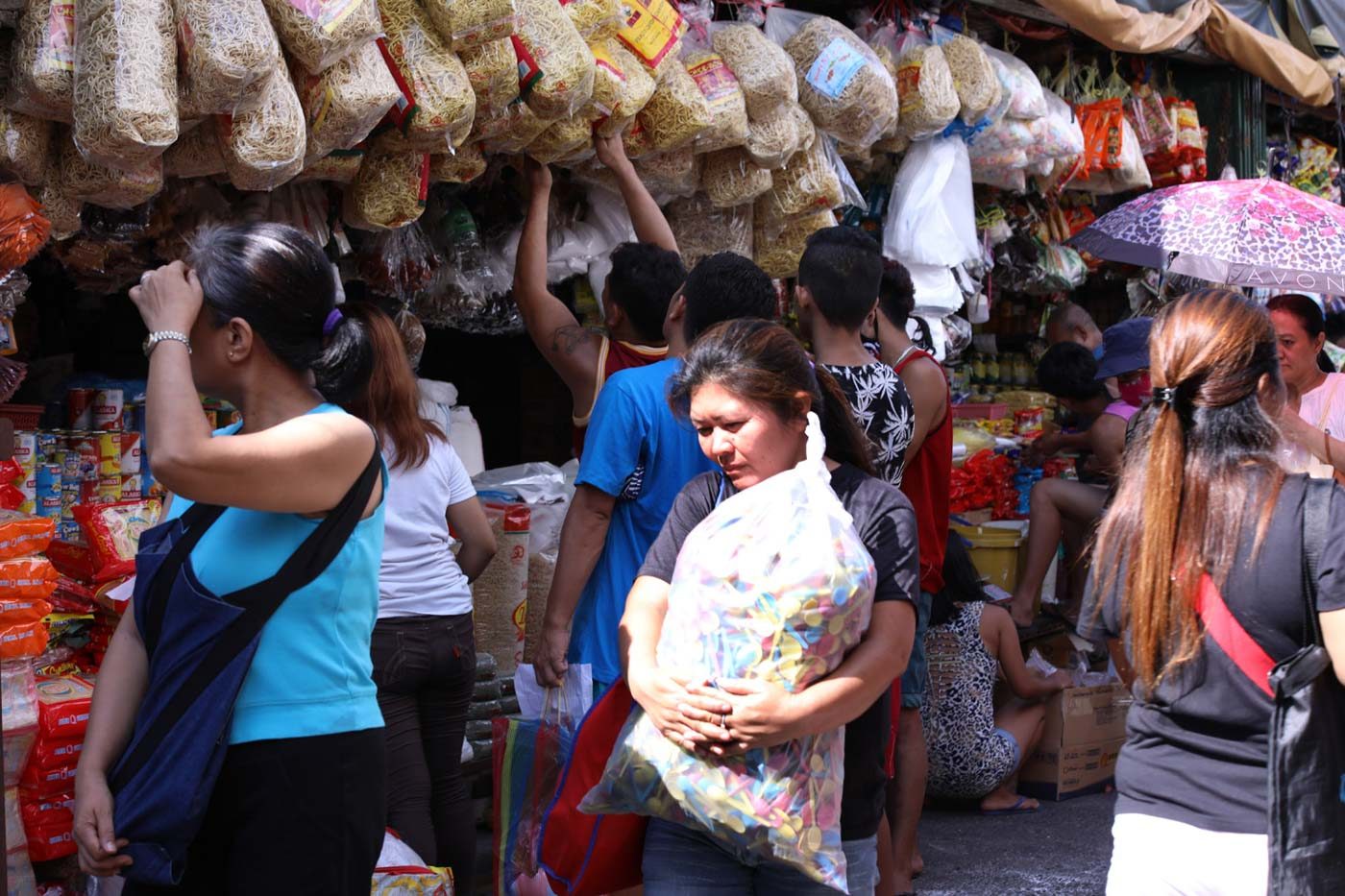SUMMARY
This is AI generated summarization, which may have errors. For context, always refer to the full article.

MANILA, Philippines (3rd UPDATE) – Inflation or the increase in the prices of goods remained steady in October at 6.7%, the Philippine Statistics Authority (PSA) announced on Tuesday, November 6.
The latest figure is the same as in September. (READ: Poorest Filipinos feel inflation at 8% in August 2018)
Prices of food and non-alcoholic beverages were hardly unchanged at 9.4% from September’s 9.7%. Food prices take the biggest slice in the computation for the overall inflation figure.
The alcoholic beverages and tobacco segment was also stable at 21.6% from 21.8%.
Mixed movements in the annual growth of prices were posted among the commodity groups. Higher annual increases were observed in the indices of the following commodity groups:
- housing, water, electricity, gas, and other fuels – 4.8%
- furnishing, household equipment, and routine maintenance of the house – 3.7%
- health – 4.3%
- transport – 8.8%
- recreation and culture – 3.1%
- restaurant and miscellaneous goods and services – 4.2%
Bangko Sentral ng Pilipinas (BSP) economists earlier projected inflation to have peaked during September and to fall within 6.2% to 7% in October. Meanwhile, the Department of Finance (DOF) forecast it to be at 6.5% in October.
Both the BSP and the DOF attributed their optimistic outlooks to stabilizing rice, power, and oil prices.
Rice prices registered 10.7% in October, similar to September’s 10.4%. However, the National Capital Region reported a slowdown of 8.2% from 9%.
BSP Governor Nestor Espenilla Jr said the latest data support “the view that inflation pressures are finally moderating” and possibly indicate that prices will return to the target range in 2019.
“The start of the harvest season for rice and improved weather conditions have contributed to some downward price pressures on rice prices. In addition, the implementation of non-monetary measures is also expected to result in a deceleration in food prices,” added the BSP in a separate statement on Tuesday.
“The BSP will continue to monitor the evolution of expectations and further second-round effects ahead of the November 2018 policy meeting.”
Economic managers now aim for inflation to settle between 3% and 4% next year. (READ: FAST FACTS: Philippine inflation rate over the years)
Regional inflation
But not all regions felt prices stabilizing in October.
Regions affected by Typhoon Ompong (Mangkhut) registered high inflation rates. Mimaropa (9% from 7.3%) and Cagayan Valley (8% from 7.6%) experienced higher inflation.
Inflation rates of the Cordillera Administrative Region (5.2% from 5%), Caraga (6.2% from 6.1%), and Western Visayas (7.7% from 7.6%) also inched up.
The continuous rise in the prices of goods has led to a downgrade in the projections of various think tanks and multilateral lenders for the country’s gross domestic product (GDP).
The World Bank cut its GDP outlook for 2018 to 6.5% from 6.7%, while the Asian Development Bank (ADB) slashed it to 6.4% from 6.8%.
GDP for the 2nd quarter stood at a disappointing 6%, which prompted economic managers to cut their target to 6.5-6.9% from the previous 7-8%.
The PSA is set to announce the GDP figure for the 3rd quarter on Thursday, November 8.
Stubbornly high inflation for the year also prompted the BSP to hike interest rates 4 times, bringing the overnight reverse repurchase rate to 4.5% to manage inflation expectations and guard the currency from speculative attacks. – Rappler.com
Add a comment
How does this make you feel?
There are no comments yet. Add your comment to start the conversation.